A self-proclaimed Old Timer, the late Nestor "Sandy" J. Sander made many contributions to Aramco ExPats in the form of old photographs and written recollections of his early days with Aramco.
In 1938 Nestor joined the California Arabian Standard Oil Company (CASOC), an affiliate of the Standard Oil of California (SOCAL, today's Chevron Corporation), which later (in 1944) became the Arabian American Oil Company, that is ARAMCO. Nestor was sent as a junior geologist for his first assignment to Saudi Arabia. That was before World War II started and much before the country became known as the major worldwide oil producer. There he probably gained his nickname and entered into the history of petroleum exploration, for he was given responsibility for the delineation of the Abqaiq field, which led to Ghawar, that was to become the world's largest oilfield. Sander's name will remain associated with those of pioneering explorationists in the Middle East, including "Dick" Bramkamp (Sander, 1959), Robert G.S. Hudson, "Mike" Morton (Dunnington et al., 1959; Q.M. Morton, 2006), R.W. Powers (1968), Max Steineke (Steineke et al., 1958), W. Sugden (Sugden & Stranding, 1975), René Wetzel (Dunnington et al., 1959), ... They are now almost forgotten for, with few notable exceptions, most of their work remains unpublished, being proprietary reports archived at their employers' headquarters.
Nestor was an accomplished author, historian, and educator chronicling much of his life. He was especially informative about his time as a geologist in the Arabian oil fields sharing accounts of his days in the desert along with his good friend, George Blakslee, and the various tools and charts they used on the job.
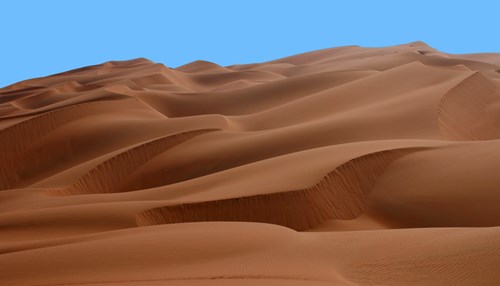
"In al Hasa, fifty miles inland from the Persian Gulf, a small drilling rig was helping to prove the existence of the great En Nala anticline, still the largest single complex of oil fields in the world. Sandy was "sitting" that well."
Reliving a Memory - George Blakslee

"George Warren Blakslee was born July 1921 in Pennsylvania and earned a BA in geology from Penn State University. In 1943, he entered the Army Air Corps and was commission bombardier in 1944. After getting his wings, George's first assignment was to train two squadrons of Chinese cadets at Kirkland Air Base, Albuquerque, New Mexico. Later, he trained for combat in B-17's and B-29's."
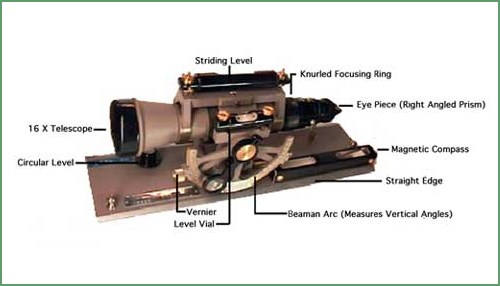
"The alidade-plane table survey is a means of plotting a traverse as it is made, thus avoiding the likelihood of mathematical blunders and recording errors that arise while working with the theodolite."

"The dark brown line on the small map marks the 1998 version of Saudi Arabia's claims regarding its boundaries with Yemen, Oman, the United Arab Emirates and Qatar."
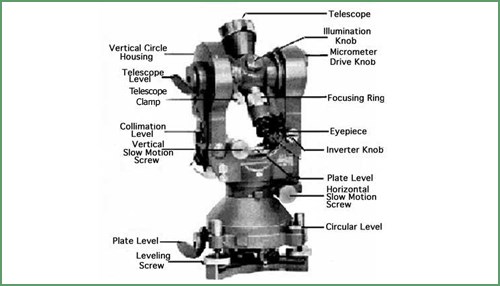
"The theodolite is an instrument that measures vertical and horizontal angles precisely. With stadia lines etched on the reticule of its telescope and the appropriate stadia rod (a flat-faced rod graduated vertically, its subdivisions corresponding to one/one hundredth of the focal distance) it will measure distances with accuracy sufficient for third order triangulation."

"The Brunton Pocket Transit that all geologists know as the 'Brunton' was invented in 1894 by D. W. Brunton, a Canadian mining geologist. It has been in use for more than a hundred years and is still being manufactured."

"Measurements of the thickness of rock sequences and description of their lithology and fauna are much less valuable if the location and elevation of these 'sections' are not known with reasonable accuracy."
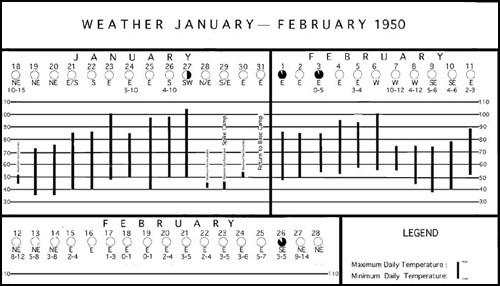
"Daily Weather Data - Chart 1, Data Collected by George Blakslee."
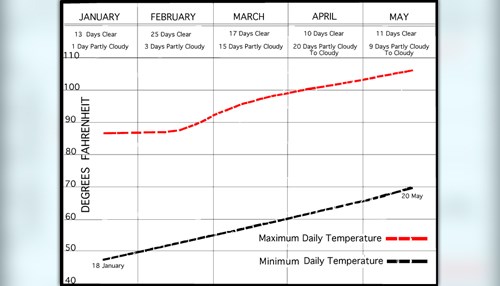
"Average Range In Temperature By Month - Chart 2, January - May 1950."